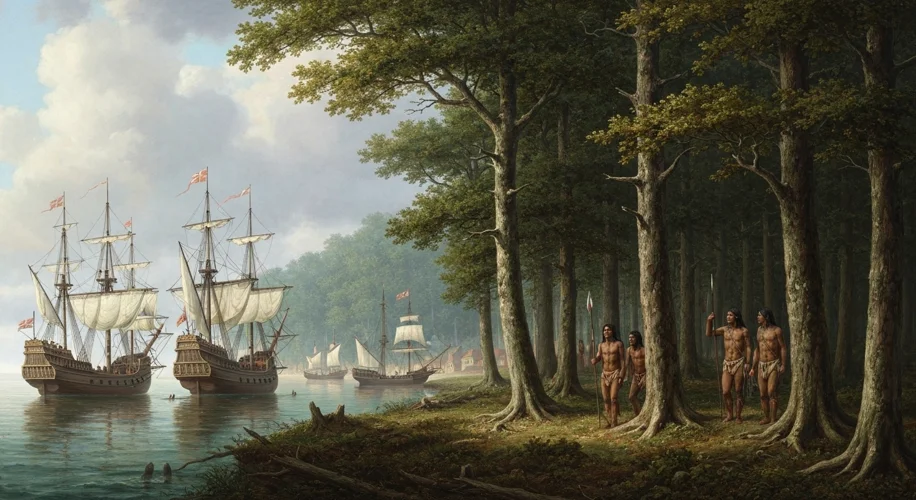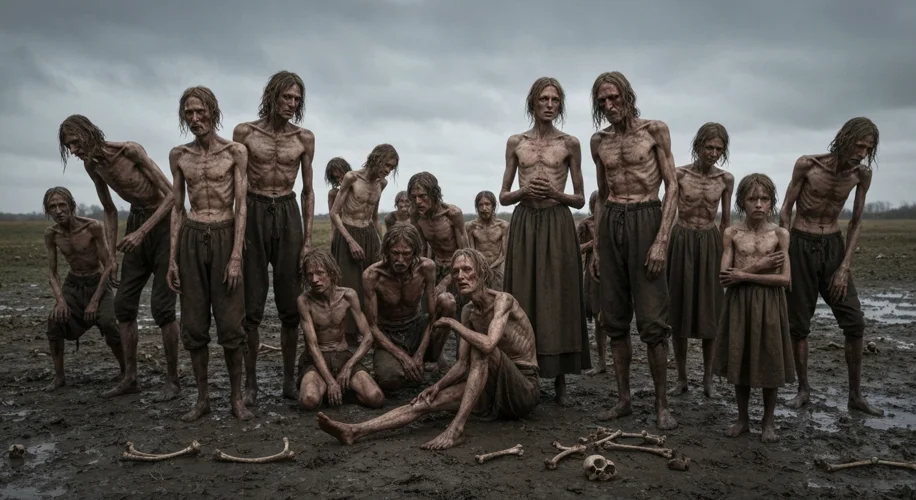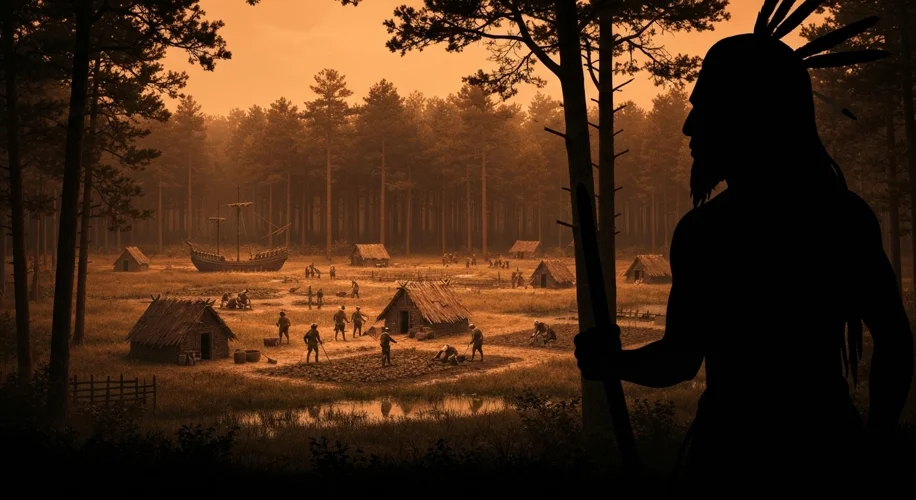The year is 1607. The air hangs thick and humid over the dense forests of what is now Virginia. For the 104 men who disembarked from three small ships – the Susan Constant, the Godspeed, and the Discovery – this was not a promised land, but a gamble. They were the first permanent English settlers in North America, a venture funded by the Virginia Company of London, eager to find riches and expand England’s influence.
Their arrival was not met with open arms. The land was already home to the Powhatan Confederacy, a sophisticated alliance of Indigenous peoples who had lived and thrived in the Chesapeake Bay region for centuries. Led by the powerful Chief Powhatan, they watched these newcomers with a mixture of curiosity and apprehension. The English, with their strange clothes, even stranger customs, and an insatiable hunger for gold, were an unknown quantity.

The early days of Jamestown were a brutal lesson in survival. The gentlemen adventurers and eager laborers had little experience with the realities of the New World. They had brought with them the expectation of easy wealth, perhaps even gold deposits lying on the surface, a misunderstanding fueled by tales of Spanish success in the Americas. Instead, they found disease-ridden swamps, a lack of food, and the constant threat of starvation.
Captain John Smith, a seasoned soldier of fortune and a pivotal figure in the colony’s early years, later wrote with stark honesty about the dire situation. “The country was very populous,” he recalled, “but the inhabitants were for the most part of a brutish, savage nature… they were the most desperate adventurers that ever undertook such a desperate voyage.”
Smith’s leadership, though controversial, was crucial. He imposed a strict discipline, famously declaring, “He that will not work shall not eat.” He also recognized the necessity of engaging with the Powhatan people, not just for trade, but for knowledge. His accounts, though colored by his own experiences and biases, offer a glimpse into the complex relationship between the settlers and the Indigenous population.
One of the most famous, and debated, episodes involved Pocahontas, Chief Powhatan’s daughter. Smith claimed she saved his life, placing her head upon his own and preventing his execution. While the exact nature of this event is uncertain – a ritual, a plea, or a combination – it became a powerful symbol of the potential for coexistence, even if that potential was ultimately fragile.
But the struggle for survival was relentless. The summer heat brought fevers and sickness, and the winter of 1609-1610, known as the “Starving Time,” brought the colony to the brink of annihilation. Facing starvation, the settlers resorted to desperate measures, including cannibalism. Of the nearly 500 people who had arrived in Jamestown by the autumn of 1609, only about 60 remained alive by the spring. The colony was on the verge of collapse, its future hanging by a thread.

It was only the timely arrival of new supplies and more settlers, led by Sir Thomas Gates, that saved the venture from complete abandonment. Jamestown, against all odds, endured.
The colony’s fortunes began to shift with the introduction of tobacco cultivation, championed by John Rolfe. Rolfe, who would later marry Pocahontas, discovered a sweeter, more palatable strain of tobacco that proved highly profitable. This cash crop became the economic lifeblood of Virginia, transforming the colony from a struggling outpost into a viable economic enterprise.

The establishment of Jamestown was not merely about planting a flag; it was a crucible that forged a new chapter in North American history. It marked the beginning of a sustained English presence, setting the stage for the thirteen colonies that would eventually form the United States. However, it also initiated a long and often tragic history of conflict, displacement, and cultural clash with the Indigenous peoples who had first inhabited the land.
The legacy of Jamestown is a complex tapestry woven with threads of ambition, desperation, resilience, and profound cultural misunderstanding. It serves as a stark reminder that the foundations of nations are often laid in hardship and that the pursuit of progress can come at a significant human cost. The early years in Jamestown were a testament to the sheer will to survive, a desperate struggle that ultimately paved the way for a new world, though one forever marked by the echoes of its brutal beginnings.

